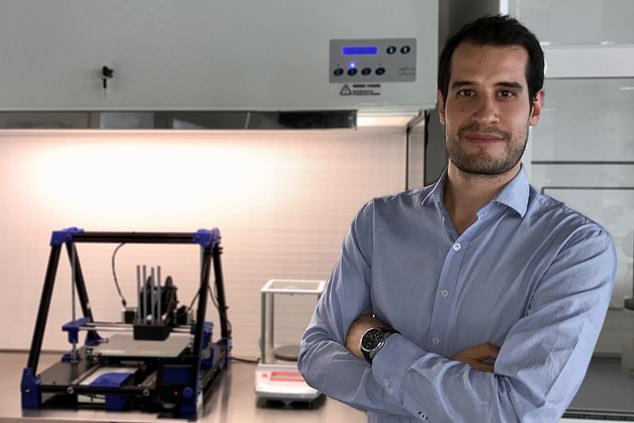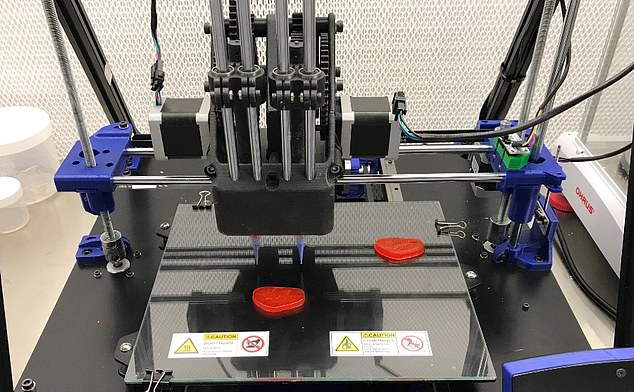3D Printing in Spain: Will You Be Having the Steak or Chicken?
3D printing has made headlines around the world due to groundbreaking innovations in the medical field—even allowing for patients’ lives to be saved in some cases due to new implants or devices that would not have been possible previously. The aerospace industry has been affected, allowing for new strides in the manufacturing of rocket engines and much more, cars and homes are being 3D printed in record time, and even more mainstream fashion and apparel such as shoes are being fabricated.
In the end though, we all know that the key to getting real attention from consumers is through their stomachs—and while 3D printing has been available so far in chocolate and other confections, pancakes, and more, now we’re really cooking with … steak! Actually, ‘extruding’ would be a better term for it, as Giuseppe Scionti, a researcher hailing from Milan, at Barcelona’s Polytechnic University of Catalonia, is able to make a variety of different raw vegetarian meat substitutes such as faux steak and chicken.
Scionti is aware that the 3D printed food, made from rice, peas, and seaweed, needs improvement aesthetically; in the meantime, however, as he refines his new food manufacturing process, the Italian scientist makes his ‘straw-colored paste’ into meals that are said to be very close in texture to the real thing—along with having similarities with tofu. Extrusion of the epicurean materials occurs through a syringe, with shaping required later.
While vegetarians may become quite interested in using this concoction for replicating meat, ultimately Scionti is hoping to make an impact on the environment in diminishing the need for livestock. It takes less than an hour to make a quarter pound of faux steak, currently, and Scionti is in talks with several restaurant owners who may be interested in purchasing the food—especially fabricated meat that looks like steak but ‘tastes like a mushroom.’
“We ate them with multiple journalists, and they thought that the plant-based prototypes possessed an animal meat-like texture,” Scionti said in a recent interview. “The taste of the first prototypes is good, but it doesn’t mimic the taste of animal meat, yet.”
“However, that does not worry me, because the technologies to imitate the taste of animal meat have already been developed in the last years, while the main challenge for me was to obtain the animal meat-like consistency and texture, which was not invented yet.”
Scionti hopes to reduce time involved in making a quarter pound of meat to five or ten minutes, with it being sold for less than 50 cents.
“We are getting closer to reaching Churchill’s prediction in 1931, who said that ‘we shall escape the absurdity of growing a whole chicken in order to eat the breast or wing by growing these parts separately under a suitable medium,’” states the scientist.
A university cook weighed in on the meatless meat saying that it has a good taste and cooks well, without sticking to the cookware.
The ingredients are all-natural and plant-based, without any GMOs, and according to Scionti, are approved for use anywhere in the world. Interestingly the modifications on the printer seem relatively easy to do by just adding syringe extruders. Perhaps the secret is in the recipe but the increasing of texture in this way could be something that other people could get into very easily. At the same time making a textured mix of perhaps many different vegan or vegetarian foodstuffs is far less expensive than “lab grown meat” such as Modern Meadow. These ‘steaks’ may not look like much right now but the approach of using 3D printing creating texture to mimic meat is a very valuable one that we believe will make manufactured vegetarian meat substitutes much more interesting in the future. At the moment we could all cook vegetarian food if we just let go of the idea of having one big item of protein crowd our plate. The gateway drug to vegetarianism is at the moment exactly this, a series of breaded soy patty things. If those items could be improved and made more healthy, then you would have a very sucessful product on your hands. Discuss this article and other 3D printing topics at 3DPrintBoard.com.
[Source / Images: Daily Mail]Subscribe to Our Email Newsletter
Stay up-to-date on all the latest news from the 3D printing industry and receive information and offers from third party vendors.
Print Services
Upload your 3D Models and get them printed quickly and efficiently.
You May Also Like
AMT Shakes Up 3D Printing Market with Affordable, High-Performance Post-Processing Consumables
Additive Manufacturing Technologies (AMT), a global leader in automated 3D printing post-processing, is launching a new line of consumables that promises to significantly reduce operational costs for additive manufacturing users....
The Bambu Lab 3D Printing Platform… or Trapdoor?
Bambu Lab began as a completely closed 3D printing system, where the printer, software, and materials all functioned well but were exclusively from the company itself. This approach mirrored Formlabs,...
2025 Renault 5 E-Tech Electric Is Latest Car with 3D Printed Accessories
Due to the required numbers, additive manufacturing (AM) has struggled to make significant inroads into vehicle interiors in meaningful numbers—at least as far as public knowledge is concerned. Typically an...
BMW Completes Project to Automate Plastic 3D Printing
After a three-year journey to efficiently scale polymer 3D printed part production, the POLYLINE project has concluded. This endeavor, headquartered at BMW’s Additive Manufacturing Campus, pooled the expertise of EOS,...


































